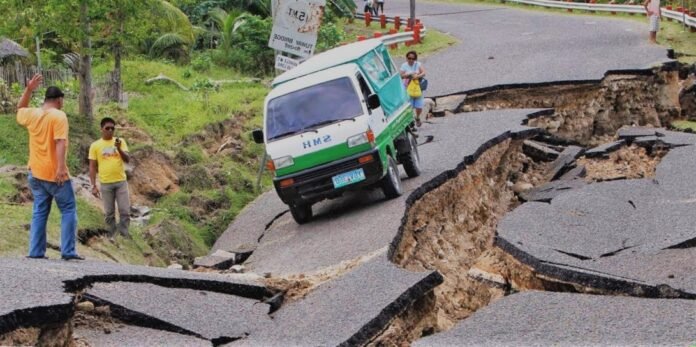Earthquakes, one of the most catastrophic natural disasters, can strike without warning, unleashing a trail of devastation. In this article, we will take a perplexing and bursty look at the strongest earthquakes in history, including their magnitude, impact, and the valuable lessons we learned from them.
The Great Chilean Earthquake, 1960:
The Great Chilean Earthquake, also known as the Valdivia Earthquake, struck on May 22, 1960, with a bewildering magnitude of 9.5. The sheer force of the earthquake resonated across the globe, with its aftershocks felt far and wide. The earthquake spawned a colossal tsunami that wreaked havoc in Hawaii, Japan, and the Philippines, leaving a swathe of destruction in its wake. However, the devastation in Chile was on an entirely different level, with entire towns destroyed and a heart-rending loss of over 5,000 lives.
The Alaskan Earthquake, 1964:
The Alaskan Earthquake, also known as the Good Friday Earthquake, jolted the world on March 27, 1964, with a magnitude of 9.2. The earthquake, with its persistent rumblings, lasted for a staggering four minutes, making it one of the most extended earthquakes ever recorded. The earthquake’s impact was felt in Alaska and beyond, causing widespread damage through landslides, tsunamis, and fires. The loss of life was immense, with over 100 people losing their lives, and the earthquake causing an astronomical $2.3 billion in damage.
The Indian Ocean Earthquake and Tsunami, 2004:
On December 26, 2004, a behemoth of an earthquake struck off the coast of Sumatra, Indonesia, registering a whopping magnitude of 9.1 on the Richter scale. The quake generated a mammoth tsunami that ravaged the coasts of several countries around the Indian Ocean, including Thailand, Sri Lanka, and India. The devastating tsunami swept away over 230,000 lives, leaving behind a tragic trail of destruction in its wake. It was undoubtedly one of the most catastrophic natural disasters in recorded history.
The Tohoku Earthquake, 2011:
The Tohoku Earthquake, also known as the Great East Japan Earthquake, rocked the world on March 11, 2011, with a shattering magnitude of 9.0. The temblor’s ferocity unleashed a massive tsunami that caused widespread damage along Japan’s coast, leading to multiple nuclear accidents at the Fukushima Daiichi Nuclear Power Plant, culminating in a catastrophic nuclear disaster. The loss of life was devastating, with over 18,000 people losing their lives, and the damage toll soaring to around $235 billion.
The Sumatra-Andaman Earthquake, 2004:
The Sumatra-Andaman Earthquake, which occurred on December 26, 2004, was a seismic monster, registering a staggering magnitude of 9.1. The earthquake unleashed a colossal tsunami that affected several countries around the Indian Ocean, causing widespread damage and loss of life. The sheer magnitude of the disaster claimed over 230,000 lives, rendering it one of the deadliest natural disasters in recorded history.
Lessons Learned:
The strongest earthquakes in history have provided valuable insights into mitigating their devastating impact. One of the most critical lessons learned is the significance of early warning systems. The development of early warning systems in recent years has given people time to evacuate and seek safety, reducing the loss of life.
Another valuable lesson learned is the importance of constructing earthquake-resistant structures. Earthquakes can cause catastrophic damage to buildings and infrastructure, leading to a loss of life and economic devastation. Constructing structures that can withstand the force of earthquakes can mitigate their impact, save lives, and reduce economic losses.
Conclusion: The strongest earthquakes in history have left behind a harrowing trail of destruction, resulting in massive loss of life and economic damage. However, they have also taught us valuable lessons about the importance of early warning systems and earthquake-resistant structures. As we continue to learn from these catastrophic events, we can work towards better preparation and mitigation strategies to reduce the impact of earthquakes and save lives. The road ahead may be challenging, but by applying these lessons, we can strive towards a safer future for all.
Google News | Telegram
















